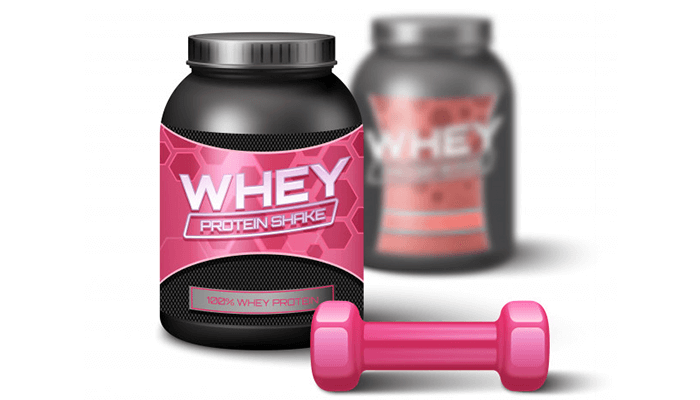

Even the unfit individuals who simply browse fitness blogs online talk about muscle building. You must have met someone like that for sure. Even the guy or girl in your gym who looks like he has written Muscle Building 101 and strength training benefits is all he talks about all the time. Well, there’s no guarantee that he or she knows all about it.
While you must continue your research on bodybuilding, you don’t have to listen to every Tom, Dick, and Harry. Misinformation with a side of lies has trickled down from trainees who become trainers for decades. As you might have guessed, several myths are going around, most of them to serve the system that earns profits for the people in this industry. Trust no one but trained professionals.
Are you looking for gym options? Access 3,500+ gyms and fitness studios with FITPASS to workout anywhere, anytime. Attend unlimited gym workouts or yoga classes with one pass to premium fitness centers across 12+ cities of India.
Table of Contents


The first few things you hear when you join or visit a gym are mostly around Protein. As if people never had good physiques before whey-protein was introduced. The first friends you make in the gym will be talking about it too. The idea that goes around is – since Protein makes muscles, the amount of Protein you consume is proportional to the increase in your muscle. That’s not true.
According to research, high protein diets do not help you gain muscle. While these diets help with muscle retention and fill you up for long, you won’t look like Arnold just because you had a lot of it. Moderate protein diets can give you good results as well.
A lot of people lift heavy weights these days. As a newbie, it is alright to be confused between lifting heavy or not. You must not necessarily lift heavy to get bigger. Weight training benefits can be different for people; some do it for the strength while others do it for the size. You will always get better results with optimal training. When it comes to strength, you might have to lift certain percentages of your records to get better control of weights. When it comes to size, weights depend on muscular fatigue; moderate loads with short periods do the trick.
Rest periods of 45-60 seconds between sets of 8-12 repetitions are great for increasing muscle size. You can also do agonist supersets for increased intensity. In this, do a set of bench presses and then a set of wide-grip pull-ups. Alternate till you complete all sets.
Cardio exercise benefits include increased endurance, but it affects the body’s ability to gain muscle and strength. However, it is not impossible to do cardio and gain muscle, as well. If your main motive is to build muscle, you can use the majority of the time spent on cardio on muscle building exercises. It is always better to avoid cardio exercises instead of increasing food intake. Nonetheless, do not cancel strength training at any cost. According to several studies, you can pair strength training with cardio exercises and still gain muscle. The result is muscle gain along with increased endurance, although only proportional. A lot of people believe that HIIT can serve as an activity that builds muscle and improves strength, but that is only true to a certain extent. Don’t depend on HIIT classes alone for the best muscle gain results.
The common belief is – doing more reps is the best way to cut fat and gain more cuts. Using heavy weights is essential for getting stronger and bulking up. It turns out that including a healthy diet can help reap the best strength training benefits. Losing body fat requires a few things to work in coordination for it to work out. Including physical activities that work, the cardiovascular system helps.
Doing 8-12 for each set is considered to be the best way to gain muscle, but there are other ways too. The volume, which is measured by weight times sets times reps, defines the increase in the muscle tissue. Muscle mass increases as the volume increases. 8, 10, or 12 reps are enough to achieve your goals as are 6 or 15 reps; the weight matters more. While some will do more reps, others will do less with heavier weights. Doing 8-12 is a good number of reps for many people. But there’s no reason to stick to it. Variation and progression play important roles in muscle building.
The reality is that exercising is probably the best way to get rid of lingering soreness. Sore muscles are not that different from recovered muscles. You can do a light workout in the gym for recovery, even if the pain is severe. Avoiding training sore muscle brings down the intensity of your workout or the frequency. All of your hard work might go to waste if you end up skipping sessions when you feel sore. Undertraining and skipping a workout will make it hard for you to build muscle over time.
Some people train 6 days a week, and it’s hard for you not to see them when you hit the gym. Working out for long hours every day is not the right way, let alone the only way to get muscled up. A half-hour workout, as it turns out, is enough if done right. Extremely long sessions lead to burnouts, a decrease in effort and motivation in addition to a possibly suppressed immune system. Sessions longer than 1.5-2 hours might mean poor exercise selection and time wastage. The point is – muscle growth is possible with short sessions.
You would do right to research on a topic before incorporating it into your routine because it might be a myth.
Helpful Resources:
1. Top 10 commandments of the long distance runner
2. Pilates exercises to do at home
3. Best Chest Exercises For Building Muscles
4. 16 Best Running Shoes in [2019] For Neutral Runners
5. Abdominals: the best routine to strengthen the abdomen
In the relentless pursuit of entrepreneurial success, it’s easy to overlook the most vital asset—yourself.… Read More
A barrel sauna isn’t just a visually striking wellness addition—it’s an efficient and highly functional… Read More
Technology is an integral part of most teenagers' lives today. While devices and social media… Read More
LASIK is one of the most popular vision correction surgeries that offers you freedom from… Read More
Plumbing issues can arise unexpectedly, and understanding the costs involved is crucial for homeowners and… Read More
Skin aging is often associated with external factors like sun exposure and pollution, but inflammation… Read More